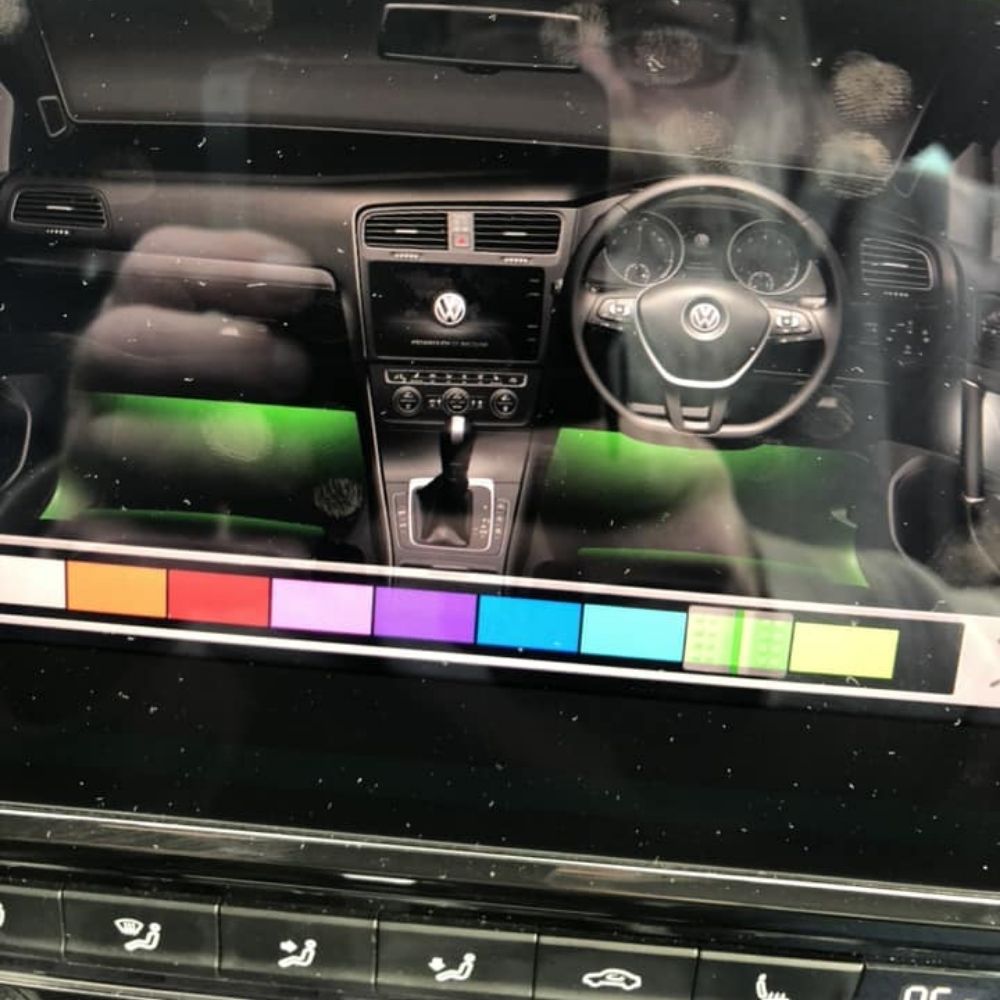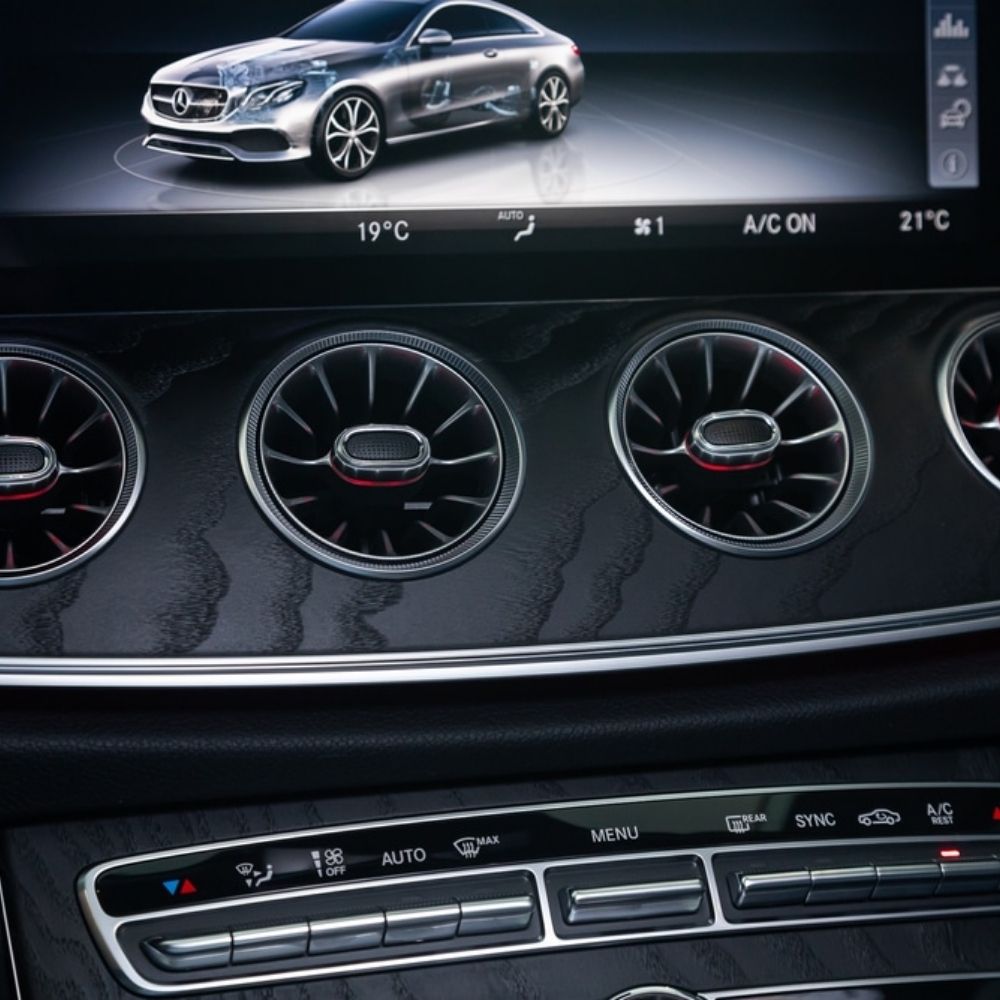
What Does The 2019 BMW X3 Model Code Reveal?
Contents
- 1. Decoding BMW Model Codes: The Basics
- What are BMW Model Codes?
- Why Are BMW Model Codes Important?
- 2. Understanding the 2019 BMW X3 Model Code
- Identifying the Chassis Code
- Decoding the Engine Code
- Key Features and Specifications
- 3. Common Issues and Troubleshooting for the 2019 BMW X3
- Engine Problems
- Electrical System Issues
- Software and Programming Errors
- 4. Diagnostics and Repair for the 2019 BMW X3
- Step-by-Step Diagnostic Process
- Repair Solutions and Programming Updates
- Tools and Equipment Needed
- 5. The Role of AutoExplain.com in Diagnosing and Repairing BMWs
- Remote Diagnostic Services
- ECU Programming and Software Installation
- Expert Technical Support
- 6. Preventative Maintenance for the 2019 BMW X3
- Regular Servicing
- Component Inspections
- Software Updates
- 7. Advanced Systems in the 2019 BMW X3
- ECU (Engine Control Unit)
- TCM (Transmission Control Module)
- BCM (Body Control Module)
- ABS (Anti-lock Braking System)
- AdBlue System
- 8. Key Programming and Navigation Updates for the 2019 BMW X3
- Key Programming Services
- Navigation System Updates
- 9. Understanding BMW’s CLAR Architecture
- What is CLAR?
- How Does CLAR Affect the 2019 BMW X3?
- 10. Common FAQs About the 2019 BMW X3 Model Code
- What does the chassis code indicate?
- How do I find the engine code?
- What kind of support does AutoExplain.com offer?
The 2019 Bmw X3 Model Code provides vital information about the vehicle’s specifications, including the engine type, chassis, and production series. Understanding these codes enables technicians to accurately diagnose and repair issues, ensuring optimal performance and longevity for the vehicle. AutoExplain.com offers remote diagnostic and programming services, providing expert support to navigate these complexities and resolve your automotive concerns efficiently.
Table of Contents
1. Decoding BMW Model Codes: The Basics
- What are BMW Model Codes?
- Why Are BMW Model Codes Important?
2. Understanding the 2019 BMW X3 Model Code - Identifying the Chassis Code
- Decoding the Engine Code
- Key Features and Specifications
3. Common Issues and Troubleshooting for the 2019 BMW X3 - Engine Problems
- Electrical System Issues
- Software and Programming Errors
4. Diagnostics and Repair for the 2019 BMW X3 - Step-by-Step Diagnostic Process
- Repair Solutions and Programming Updates
- Tools and Equipment Needed
5. The Role of AutoExplain.com in Diagnosing and Repairing BMWs - Remote Diagnostic Services
- ECU Programming and Software Installation
- Expert Technical Support
6. Preventative Maintenance for the 2019 BMW X3 - Regular Servicing
- Component Inspections
- Software Updates
7. Advanced Systems in the 2019 BMW X3 - ECU (Engine Control Unit)
- TCM (Transmission Control Module)
- BCM (Body Control Module)
- ABS (Anti-lock Braking System)
- AdBlue System
8. Key Programming and Navigation Updates for the 2019 BMW X3 - Key Programming Services
- Navigation System Updates
9. Understanding BMW’s CLAR Architecture - What is CLAR?
- How Does CLAR Affect the 2019 BMW X3?
10. Common FAQs About the 2019 BMW X3 Model Code - What does the chassis code indicate?
- How do I find the engine code?
- What kind of support does AutoExplain.com offer?
1. Decoding BMW Model Codes: The Basics
What are BMW Model Codes?
BMW model codes, also known as chassis codes and engine codes, are internal designations assigned by the manufacturer to identify specific vehicle models and their components. These codes help in organizing planning and development, avoiding confusion when dealing with various models and parts. For example, engine codes typically begin with letters like M, N, B, or S, while chassis codes start with E, F, G, or U. These codes provide detailed information about the car’s engine, chassis, and other specifications.
Why Are BMW Model Codes Important?
BMW model codes are essential for several reasons. They allow technicians and mechanics to quickly identify the correct parts and specifications for a vehicle, ensuring accurate repairs and maintenance. These codes also help in diagnostics, as specific issues are often related to particular engine or chassis types. Furthermore, understanding these codes is crucial for ECU programming, software updates, and key programming, which are vital for modern automotive maintenance. By using these codes, professionals at AutoExplain.com can offer precise and efficient remote support, saving time and ensuring the job is done right.
2. Understanding the 2019 BMW X3 Model Code
To properly diagnose and maintain a 2019 BMW X3, you need to understand its model code. This code breaks down into the chassis code, engine code, and other relevant identifiers, which provide key information about the car’s specifications and features.
Identifying the Chassis Code
The chassis code for the 2019 BMW X3 is G01. This code is essential for identifying the specific generation and body style of the vehicle. The G chassis series indicates a newer generation of BMWs, known for their advanced technology and design improvements. Knowing the chassis code helps technicians ensure they are using the correct repair manuals, parts, and diagnostic procedures specific to the G01 chassis.
Decoding the Engine Code
The 2019 BMW X3 comes with a few engine options, each with its own code. Here are the primary engine codes for this model year:
- X3 xDrive30i: B46B20M0 (for 2018-2019 models) and B46B20M1 (for 2020-2024 models)
- X3 M40i: B58B30M0 (for 2018-2019 models) and B58B30O1 (for 2020-2024 models)
The B46 engine is a 2.0L inline-4 Twin Scroll Turbo engine, while the B58 is a 3.0L inline-6 Twin Scroll Turbo engine. These codes provide critical details such as the engine family (B series), number of cylinders, and specific design features like the Twin Scroll Turbo and Valvetronic systems.
Key Features and Specifications
The 2019 BMW X3 G01 is equipped with several key features and specifications that are important for diagnostics and repair:
- Engine Options: B46 2.0L I4 Turbo, B58 3.0L I6 Turbo
- Transmission: 8-speed automatic (8AT)
- Drivetrain: xDrive all-wheel drive system
- Technology: Twin-Scroll Turbo, Valvetronic, SULEV emissions spec (depending on the engine)
Understanding these specifications helps technicians identify potential issues and apply the correct repair procedures. For example, knowing that the B46 engine uses a Twin-Scroll Turbo can guide diagnostics related to turbocharger performance.
3. Common Issues and Troubleshooting for the 2019 BMW X3
The 2019 BMW X3, like all vehicles, may encounter specific issues over time. Knowing these common problems can aid in faster and more accurate diagnostics.
Engine Problems
Some common engine-related issues in the 2019 BMW X3 include:
- Turbocharger Problems: The Twin-Scroll Turbo in both the B46 and B58 engines can experience issues such as boost leaks, failure of the wastegate, or complete turbo failure. Symptoms include reduced engine power, whistling noises, and diagnostic codes related to turbocharger performance.
- Valvetronic System Issues: The Valvetronic system, which controls valve lift, can suffer from sensor failures or mechanical problems. This can lead to rough idling, poor throttle response, and error codes related to the Valvetronic system.
- Oil Leaks: BMW engines are known for oil leaks, particularly around the valve cover gasket, oil filter housing, and oil pan. Regular inspection and timely repairs are crucial to prevent engine damage.
- Cooling System Problems: Overheating can occur due to coolant leaks, faulty thermostats, or radiator issues. Monitoring the engine temperature and inspecting the cooling system components regularly can prevent serious damage.
Electrical System Issues
Electrical problems can also arise in the 2019 BMW X3:
- Sensor Failures: Modern BMWs rely on numerous sensors, and their failure can cause various issues. Common culprits include oxygen sensors, mass airflow (MAF) sensors, and crankshaft position sensors.
- Battery Drain: Excessive battery drain can result from faulty modules, aftermarket accessories, or a failing battery. Diagnosing and addressing the source of the drain is essential to prevent starting problems.
- Lighting Problems: Issues with headlights, taillights, or interior lighting can occur due to blown bulbs, faulty wiring, or module failures.
- iDrive System Malfunctions: The iDrive system, which controls infotainment and vehicle settings, can experience software glitches, screen failures, or connectivity problems.
Software and Programming Errors
Given the advanced technology in the 2019 BMW X3, software and programming errors are also common:
- ECU Programming Issues: Problems can arise during ECU programming or software updates, leading to drivability issues or complete module failure.
- Module Communication Errors: Communication issues between different modules (e.g., ECU, TCM, BCM) can result in a variety of symptoms, from warning lights to system malfunctions.
- Software Glitches: Software glitches can affect various systems, including the transmission, ABS, and driver assistance features.
4. Diagnostics and Repair for the 2019 BMW X3
Diagnosing and repairing a 2019 BMW X3 requires a systematic approach and the right tools. Here’s a step-by-step guide to help you through the process.
Step-by-Step Diagnostic Process
- Initial Assessment: Start by gathering information about the problem. Ask the customer about the symptoms, when they occur, and any recent maintenance or repairs.
- Visual Inspection: Perform a thorough visual inspection of the vehicle. Check for obvious signs of damage, leaks, or worn components.
- Diagnostic Scan: Use a professional-grade scan tool to retrieve diagnostic trouble codes (DTCs) from all relevant modules (ECU, TCM, BCM, ABS, etc.).
- Code Analysis: Analyze the DTCs to identify the affected systems and components. Research the codes to understand their possible causes and related symptoms.
- Component Testing: Perform specific component tests to verify the functionality of sensors, actuators, and other parts. Use a multimeter, oscilloscope, or specialized testing equipment as needed.
- Wiring and Circuit Testing: Check the wiring and circuits related to the identified problem. Look for shorts, opens, or high resistance. Use wiring diagrams to trace circuits and identify potential faults.
- Software and Programming Checks: Verify that the software versions in the affected modules are up-to-date. Check for any available software updates or recalls.
- Final Verification: After performing repairs, clear the DTCs and perform a test drive to ensure the problem is resolved. Monitor the system for any recurring issues.
Repair Solutions and Programming Updates
Based on the diagnostic results, apply the appropriate repair solutions:
- Component Replacement: Replace faulty sensors, actuators, or mechanical parts with genuine BMW parts or high-quality aftermarket alternatives.
- Wiring Repairs: Repair or replace damaged wiring, connectors, or terminals. Ensure proper connections and insulation to prevent future issues.
- Software Updates: Perform software updates or programming on affected modules using BMW-approved software and procedures.
- ECU Programming: If the ECU is faulty or needs reprogramming, use specialized tools and software to flash the correct software version.
- Module Configuration: Configure or calibrate new modules to ensure they communicate correctly with other vehicle systems.
Tools and Equipment Needed
To perform diagnostics and repairs on a 2019 BMW X3, you’ll need the following tools and equipment:
- Professional-Grade Scan Tool: Capable of reading and clearing DTCs from all vehicle modules.
- Multimeter: For testing voltage, resistance, and continuity.
- Oscilloscope: For analyzing electrical signals and waveforms.
- BMW Diagnostic Software: Such as ISTA (Integrated Service Technical Application) for advanced diagnostics and programming.
- Wiring Diagrams: To trace circuits and identify wiring faults.
- Specialized Tools: Such as timing tools, fuel pressure testers, and compression testers.
5. The Role of AutoExplain.com in Diagnosing and Repairing BMWs
AutoExplain.com offers remote diagnostic and programming services designed to help technicians and vehicle owners resolve complex issues with BMW vehicles, including the 2019 X3. Our expert support ensures efficient and accurate repairs, saving you time and money.
Remote Diagnostic Services
AutoExplain.com provides remote diagnostic assistance using advanced diagnostic tools and software. Our experienced technicians can remotely access your vehicle’s diagnostic data, analyze DTCs, and provide step-by-step guidance to identify the root cause of the problem. This service is particularly useful for diagnosing intermittent issues or problems that are difficult to replicate in a shop environment.
ECU Programming and Software Installation
ECU programming and software installation are critical for maintaining the performance and reliability of modern BMWs. AutoExplain.com offers remote ECU programming services, allowing you to update or reprogram your vehicle’s ECU without the need for expensive dealership visits. Our technicians ensure that the correct software versions are installed, resolving issues related to drivability, emissions, and system performance.
Expert Technical Support
AutoExplain.com provides expert technical support via WhatsApp +1(936)2896695 and email ([email protected]). Our team of experienced BMW technicians is available to answer your questions, provide technical guidance, and assist with complex repairs. Whether you’re a professional mechanic or a DIY enthusiast, AutoExplain.com is your trusted partner for BMW diagnostics and repair.
6. Preventative Maintenance for the 2019 BMW X3
Preventative maintenance is key to ensuring the longevity and reliability of your 2019 BMW X3. Regular servicing, component inspections, and software updates can help prevent costly repairs and keep your vehicle running smoothly.
Regular Servicing
Follow the recommended maintenance schedule outlined in your BMW owner’s manual. Regular servicing should include:
- Oil Changes: Change the engine oil and filter at the recommended intervals (typically every 5,000 to 7,500 miles).
- Fluid Checks: Check and top off all fluid levels, including coolant, brake fluid, power steering fluid, and transmission fluid.
- Filter Replacements: Replace the air filter, cabin air filter, and fuel filter at the specified intervals.
Component Inspections
Regularly inspect key components to identify potential issues early:
- Brakes: Check the brake pads, rotors, and brake lines for wear and damage.
- Suspension: Inspect the shocks, struts, springs, and control arms for leaks, wear, or damage.
- Tires: Check the tire pressure, tread depth, and wear patterns.
- Belts and Hoses: Inspect the belts and hoses for cracks, leaks, or wear.
Software Updates
Keep your vehicle’s software up-to-date to ensure optimal performance and prevent software-related issues. Check for available software updates for the ECU, TCM, BCM, and other modules.
7. Advanced Systems in the 2019 BMW X3
The 2019 BMW X3 is equipped with several advanced electronic systems that require specialized knowledge for diagnostics and repair.
ECU (Engine Control Unit)
The ECU controls various engine functions, including fuel injection, ignition timing, and emissions control. Proper ECU programming and calibration are essential for optimal engine performance and fuel efficiency.
TCM (Transmission Control Module)
The TCM controls the automatic transmission, managing gear shifts and torque converter lockup. Issues with the TCM can lead to shifting problems, erratic behavior, or complete transmission failure.
BCM (Body Control Module)
The BCM controls various body functions, including lighting, wipers, power windows, and door locks. Problems with the BCM can cause a range of issues affecting vehicle convenience and safety.
ABS (Anti-lock Braking System)
The ABS prevents wheel lockup during hard braking, improving vehicle stability and control. Issues with the ABS can compromise braking performance and safety.
AdBlue System
The AdBlue system reduces NOx emissions in diesel engines. Problems with the AdBlue system can lead to emissions-related error codes and reduced engine performance.
8. Key Programming and Navigation Updates for the 2019 BMW X3
Key programming and navigation updates are essential services for modern BMW vehicles.
Key Programming Services
If you need to replace a lost or damaged key, AutoExplain.com offers remote key programming services. Our technicians can program new keys to your vehicle’s immobilizer system, ensuring proper functionality and security.
Navigation System Updates
Keep your navigation system up-to-date with the latest maps and software. AutoExplain.com provides navigation system updates, ensuring accurate directions and access to new features.
9. Understanding BMW’s CLAR Architecture
What is CLAR?
CLAR (Cluster Architecture) is BMW’s modular engineering platform designed for flexibility and scalability across various models. It allows BMW to use common components and engineering principles across a range of vehicles, improving efficiency and reducing development costs.
How Does CLAR Affect the 2019 BMW X3?
The 2019 BMW X3 (G01) utilizes the CLAR platform, which means it shares many components and systems with other BMW models. This commonality can simplify diagnostics and repairs, as technicians can apply knowledge and procedures learned from other CLAR-based vehicles. However, it also means that certain issues may be common across multiple models, requiring a broad understanding of the CLAR architecture to effectively troubleshoot and resolve problems.
10. Common FAQs About the 2019 BMW X3 Model Code
What does the chassis code indicate?
The chassis code indicates the specific generation and body style of the vehicle. For the 2019 BMW X3, the chassis code G01 signifies it is part of the newer generation of BMWs, known for advanced technology and design improvements. This code helps technicians use the correct repair manuals, parts, and diagnostic procedures.
How do I find the engine code?
The engine code can typically be found on a sticker located in the engine bay or in the vehicle’s documentation. For the 2019 BMW X3, common engine codes include B46B20M0/M1 (for the xDrive30i) and B58B30M0/O1 (for the M40i). Knowing the engine code helps technicians identify the specific engine type and its features, aiding in accurate diagnostics and repairs.
What kind of support does AutoExplain.com offer?
AutoExplain.com offers remote diagnostic services, ECU programming and software installation, and expert technical support via WhatsApp +1(936)2896695 and email ([email protected]). Our experienced technicians provide step-by-step guidance to resolve complex issues, ensuring efficient and accurate repairs for your BMW vehicle. Contact us at our office located at 1500 N Grant ST Sten Denver, CO 80203.
By understanding the 2019 BMW X3 model code and utilizing the services offered by AutoExplain.com, technicians and vehicle owners can ensure the proper diagnosis, maintenance, and repair of this advanced vehicle. Contact AutoExplain.com today for expert support and keep your BMW running at its best.


How to Perform 7 Speed DSG Basic Settings with ODIS on Skoda Octavia

How do you fix a Tire Pressure Monitor Inoperative Mercedes

Mercedes Temperature Offset Coding: Set Air Conditioner Colder Using DTS Monaco







